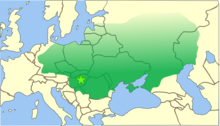| Millennium: | 1st millennium |
|---|---|
| Centuries: | |
| Decades: | |
| Years: |
This article needs additional citations for verification. (June 2023) |
| 453 by topic |
|---|
| Leaders |
| Categories |
| Gregorian calendar | 453 CDLIII |
| Ab urbe condita | 1206 |
| Assyrian calendar | 5203 |
| Balinese saka calendar | 374–375 |
| Bengali calendar | −140 |
| Berber calendar | 1403 |
| Buddhist calendar | 997 |
| Burmese calendar | −185 |
| Byzantine calendar | 5961–5962 |
| Chinese calendar | 壬辰年 (Water Dragon) 3150 or 2943 — to — 癸巳年 (Water Snake) 3151 or 2944 |
| Coptic calendar | 169–170 |
| Discordian calendar | 1619 |
| Ethiopian calendar | 445–446 |
| Hebrew calendar | 4213–4214 |
| Hindu calendars | |
| - Vikram Samvat | 509–510 |
| - Shaka Samvat | 374–375 |
| - Kali Yuga | 3553–3554 |
| Holocene calendar | 10453 |
| Iranian calendar | 169 BP – 168 BP |
| Islamic calendar | 174 BH – 173 BH |
| Javanese calendar | 338–339 |
| Julian calendar | 453 CDLIII |
| Korean calendar | 2786 |
| Minguo calendar | 1459 before ROC 民前1459年 |
| Nanakshahi calendar | −1015 |
| Seleucid era | 764/765 AG |
| Thai solar calendar | 995–996 |
| Tibetan calendar | 阳水龙年 (male Water-Dragon) 579 or 198 or −574 — to — 阴水蛇年 (female Water-Snake) 580 or 199 or −573 |

Year 453 (CDLIII) was a common year starting on Thursday (link will display the full calendar) of the Julian calendar. At the time, it was known as the Year of the Consulship of Opilio and Vincomalus (or, less frequently, year 1206 Ab urbe condita). The denomination 453 for this year has been used since the early medieval period, when the Anno Domini calendar era became the prevalent method in Europe for naming years.